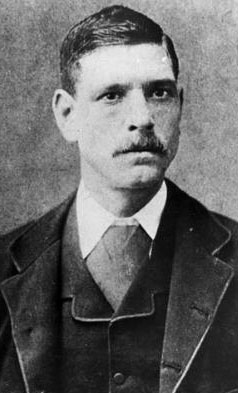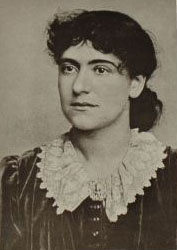GMB and the gasworkers’ union
The main forerunner of today’s GMB trade union grew out of the scandalous, brutal and inhuman working conditions and 12-hour days expected of those employed at Beckton gas works on the outer edges of the East End of London in the years before 1889.
Its importance in the history of trade unionism, however, has less to do with the significant early victory of the union over working hours than the fact that, for the first time, a trade union successfully sought to organise the mass of unskilled workers. The timing and geography is also important. Just the previous year, the strike by matchgirls at the Bryant & May factory in Bow had captured the popular imagination. Within a few months, the Port of London would be brought to a halt by casual workers striking in pursuit of the docker’s tanner .
Building on these three victories, the trade union movement grew from a combined membership of just 750,000 in 1888 to 6.5 million by 1918. By the end of this period, trade unions were no longer the preserve of an aristocracy of skilled labour the engineers, builders and carpenters but a normal part of working life for skilled, semi-skilled and white-collar workers alike.

The central figure in the birth of the union was Will Thorne. Born in 1857 and left fatherless at an early age, Thorne had worked in a variety of unskilled jobs around Birmingham before finding work at Saltley gas works. Here, at the age of 20, he became involved in leading a strike over Sunday working with mixed results for the workers, but at the personal cost of demotion and pay cut.
By the end of 1881, Thorne had come to London with his young family, where he eventually found work at Beckton. Thorne continued his earlier activism, joining the Social Democratic Federation in 1884 and attempting unsuccessfully to form a trade union at the gas works. The breakthrough would come only after years of effort, but by 1889 the time was ripe.
At a preliminary meeting held in the Barking Road on 24 March, Thorne took the chair. At his side was his friend Ben Tillett, by then already general secretary of the small Tea Operatives and General Labourers’ Union , but shortly to be a leading figure in the dock strike and the eventual formation of the Transport and General Workers Union. At this meeting, the 800 men from Beckton who were present agreed in principle to form a union, and agreed that a deputation should go to the manager of the works to put their case for an eight hour day.
A week later, on the morning of Sunday 31 March 1889, the National Union of Gas Workers and General Labourers of Great Britain and Ireland came into existence at a meeting attended by 2,500 Beckton gas workers. Both Thorne and Tillett spoke at the meeting, as did Eleanor Marx, and from the Amalgamated Society of Engineers John Burns and Tom Mann.
Here, Thorne told his audience, some of whom would have just completed an 18-hour shift:
‘The way you have been treated at your work for many years is scandalous, brutal and inhuman. I pledge my word that, if you will stand firm and don’t waver, within six months we will claim and win the eight-hour day, a six-day week and the abolition of the present slave-driving methods in vogue not only at the Beckton gas works but all over the country.’
Elected as a provisional committee, Thorne, Tillett and William Byford set to work drafting a constitution. With this approved, and at Thorne’s insistence, a delegate conference now voted to pursue the question of an eight-hour day rather than seek a pay rise. A petition was duly presented to the gas companies, and in due course the Gas, Light and Coke Company at Beckton agreed that there would, in future, be three eight-hour shifts in place of the present two twelve-hour shifts, and with no loss of pay. The agreement would be implemented not just at Beckton but at the company’s other London works.
Thorne was later to write:
‘It was a milestone in trade union history and one of the greatest victories ever achieved Our union put heart into thousands of unskilled, badly paid and unorganised workers.’
With Thorne now elected as general secretary (at a salary of £2 5s a week), the union began to grow rapidly. In the first two weeks, 3,000 gas workers had signed up. By the time the first half-yearly report was presented, there were 43 branches in the capital and 19 elsewhere

Eleanor Marx, the daughter of Karl Marx, was to be an influential figure in the early days of the new union. She helped Thorne, who was largely self-educated and quite unused to paperwork, to draw up the provisional constitution and served on the union’s executive committee. Her influence is detectable in the decision by the union’s delegate conference at Whitsun 1890 to adopt as one object to obtain for the same work the same wages for women as for men .
Other significant individuals in the new union included Pete Curran, a Scot employed at Woolwich Arsenal, who would work for the union as one of its most effective organisers until 1910, and William Byford, formerly secretary of the Yorkshire Glassblowers Association and now the gas workers’ treasurer.
The new union spread rapidly beyond the gas works to recruit mainly unskilled and semi-skilled workers in a range of industries. In recognition of this, in 1916 it became the National Union of General Workers, and embarked on a series of mergers which were to make it one of the largest unions in the country. One of the first mergers was with the National Federation of Women Workers. In 1924, the NUGW merged again with the Tyneside-based National Amalgamated Union of Labour and the Municipal Employees Association to found the National Union of General and Municipal Workers – the name under which it would be known for nearly six decades.
Among the unions to join the NUGMW over the next half century were: the National Union of Water Works Employees; the Scottish Metalworkers’ Union; the Salt & Chemical Workers’ Union; Manchester Warehouse Employees’ Association; the Rubber, Plastics & Allied Workers’ Union; the Scottish Professional Footballers’ Association; the Coopers & Allied Workers of Great Britain; the Amalgamated Textile Workers; the Scottish Lace and Textile Workers’ Union; and the Greater London Staff Association
In 1982 the NUGMW merged with the Amalgamated Society of Boilermakers, Blacksmiths, Shipwrights and Structural Workers to form the General, Municipal and Boilermakers Union (GMBU). This in turn swallowed up the Association of Professional, Executive, Clerical and Computer Staff (APEX) in 1989, the National Union of Tailors and Garment Workers in 1991, and the Furniture, Timber and Allied Trades Union in 1993. The union eventually became one of the first to drop its descriptive name in favour simply of three initials – GMB – which need never be spelled out.
Books
The Air of Freedom: the birth of the new unionism, Yvonne Kapp (Lawrence & Wishart, 1989).
Further information
Records of the National Union of Gas Workers and General Labourers can be found in the GMB Collection at the Working Class Movement Library in Salford.
On this site
Association of Professional, Executive, Clerical and Computer Staff.